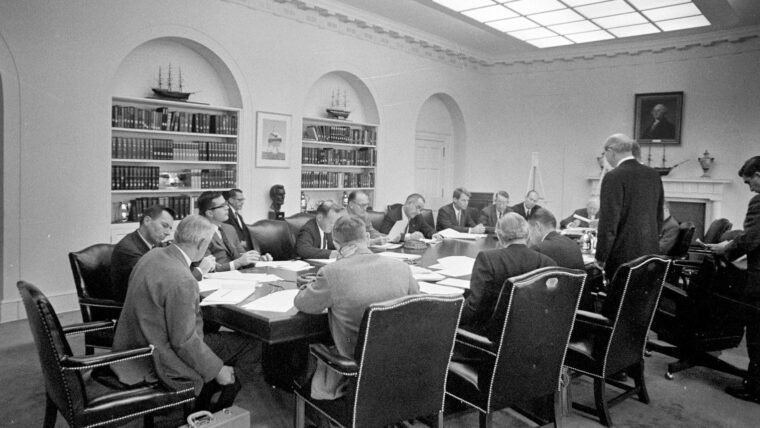
Dwight D. Eisenhower
The Cuban Missile Crisis: On the Brink of Nuclear War
By Peter KrossFor 13 tension-filled days in October 1962, the world came closer to nuclear war than it has ever come before or since. Read more

Dwight D. Eisenhower
For 13 tension-filled days in October 1962, the world came closer to nuclear war than it has ever come before or since. Read more
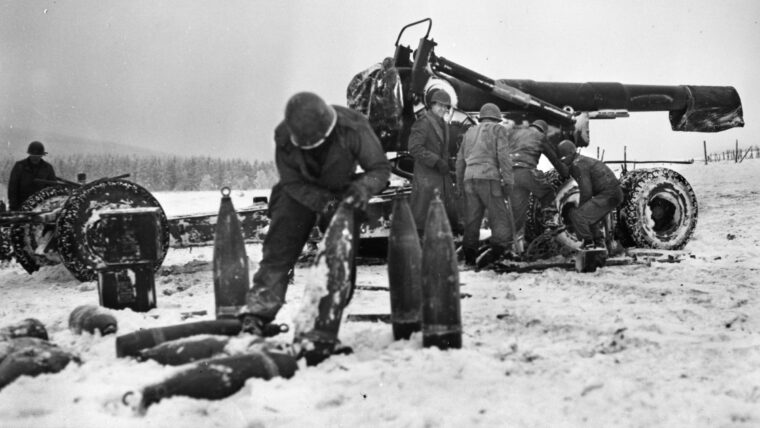
Dwight D. Eisenhower
Early on the morning of December 16, 1944, the commander of the U.S. 406th Artillery Group, Colonel George Axelson, had a difficult decision to make. Read more
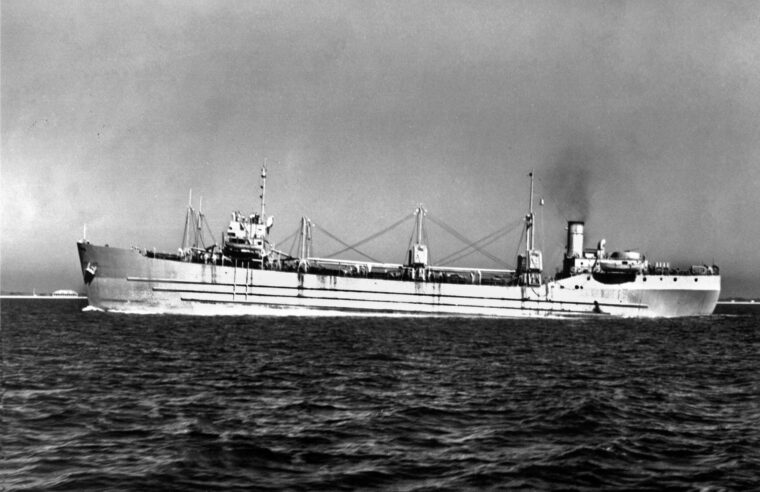
Dwight D. Eisenhower
It is a fact that war has sparked some amazing innovations. It has at the same time spawned incredible desperation. Read more
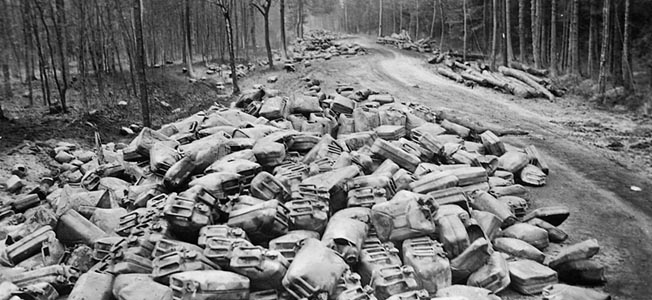
Dwight D. Eisenhower
By Michael D. Hull
August 1944 saw a rosy mood of optimism and self-deception sweep through the Allied high command in France as a result of the sudden, dramatic end to the campaign in Normandy. Read more
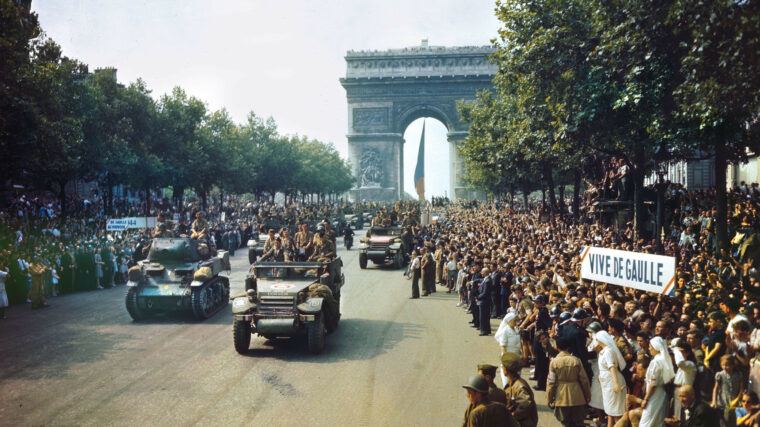
Dwight D. Eisenhower
After the humiliating fall of France in June 1940, two impassioned patriots—a general and an infantry captain—refused to accept defeat and determined, against all odds, to exact retribution from the German invaders. Read more
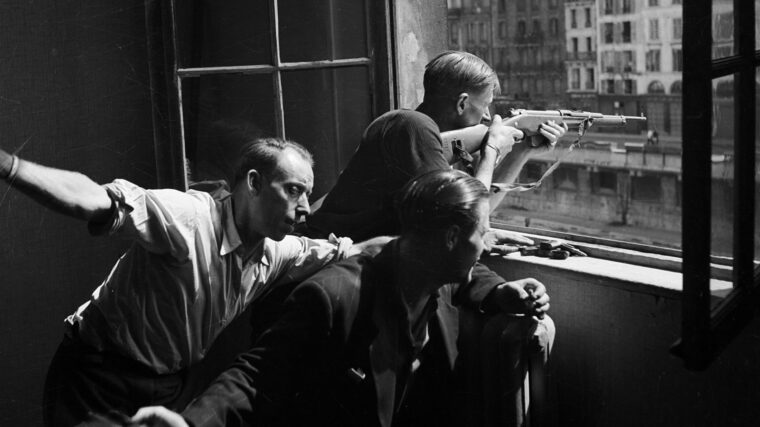
Dwight D. Eisenhower
By the late summer of 1944, the Third Reich was almost surrounded. Two years earlier Adolf Hitler had ground 10 European countries under his heel along with vast expanses of North Africa and Soviet Russia. Read more
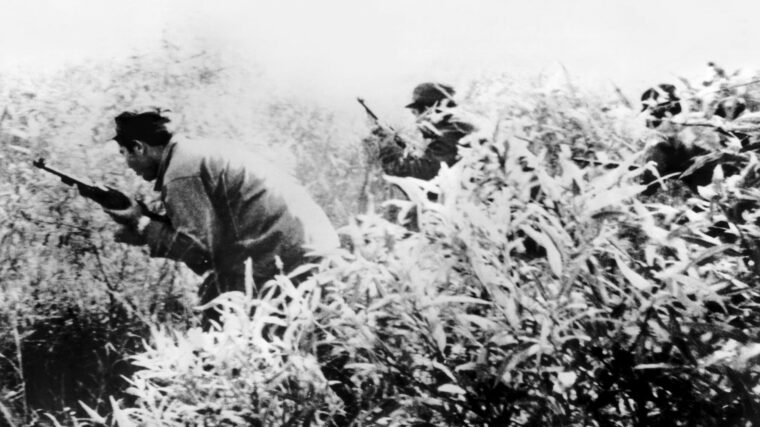
Dwight D. Eisenhower
On the morning of April 18, 1961, readers of the New York Times awoke to a startling headline: “Anti-Castro Units Land in Cuba; Report Fighting at Beachhead; Rusk Says U.S. Read more
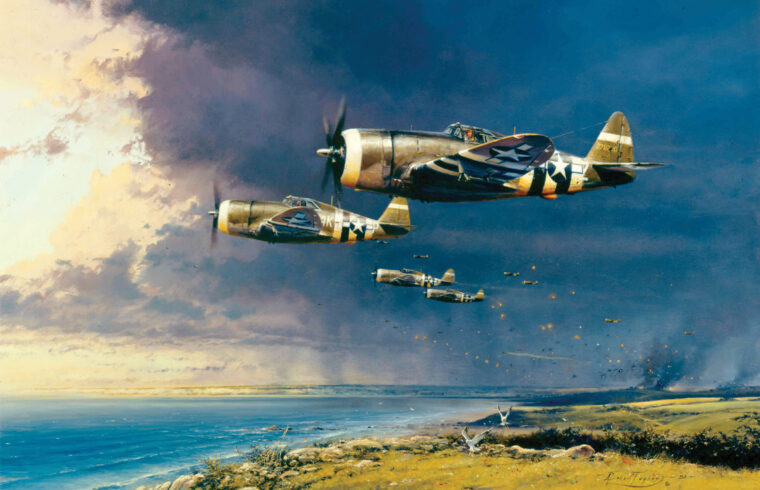
Dwight D. Eisenhower
As the landing craft carrying the invading Allied ground forces of Operation Overlord motored toward the Normandy beaches on June 6, 1944, they were protected and supported by the largest aerial armada the world has ever seen. Read more
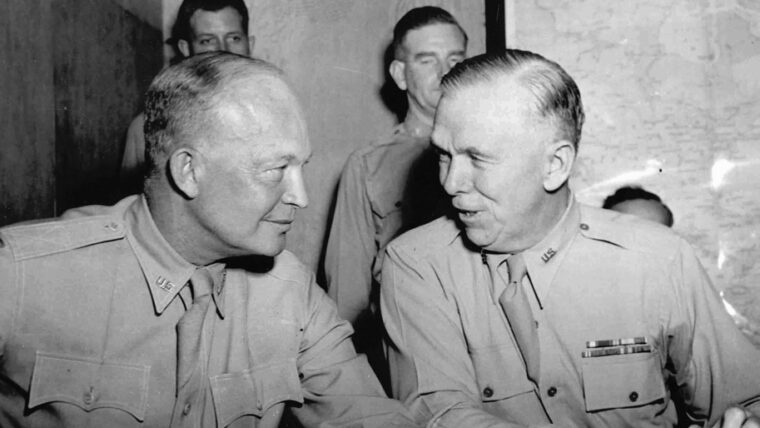
Dwight D. Eisenhower
President Franklin D. Roosevelt was disturbed in the autumn of 1938 by the Munich agreement, at which the rights of Czechoslovakia were signed away, and by reports of mounting air strength in Adolf Hitler’s Nazi Germany. Read more
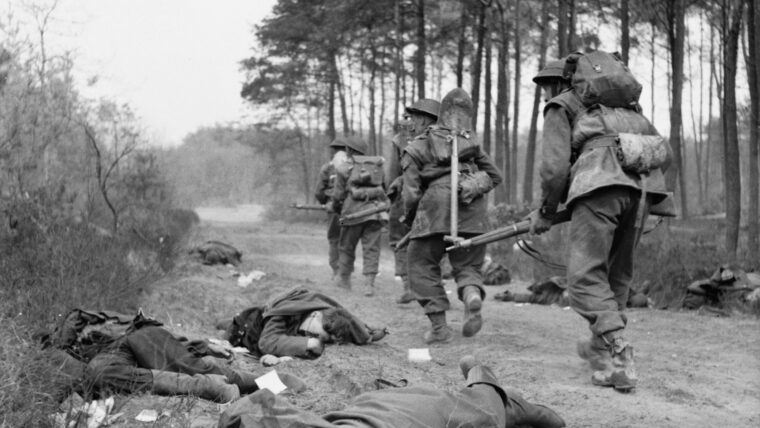
Dwight D. Eisenhower
“I am busy getting ready for the next battle,” Field Marshal Sir Bernard Law Montgomery wrote his son David in early March 1945. Read more
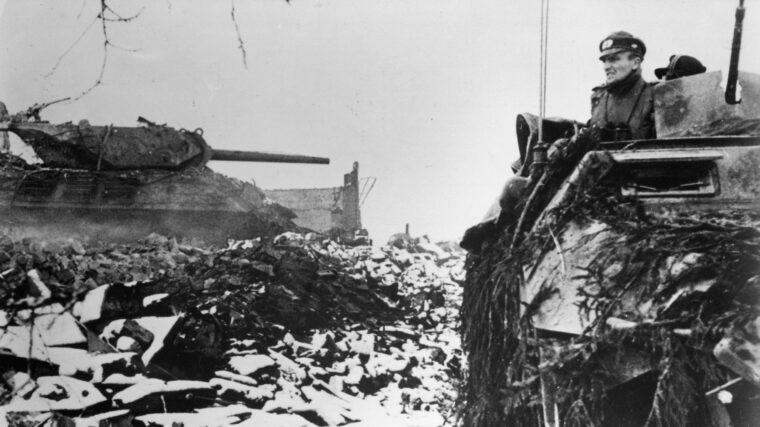
Dwight D. Eisenhower
In December 1944, the Ardennes front or “ghost front” was an area where either veteran Allied units rotated in to rest and recover from terrible combat losses or where new, untested units arrived to gather some combat experience from the minor skirmishes that would occasionally flare up. Read more
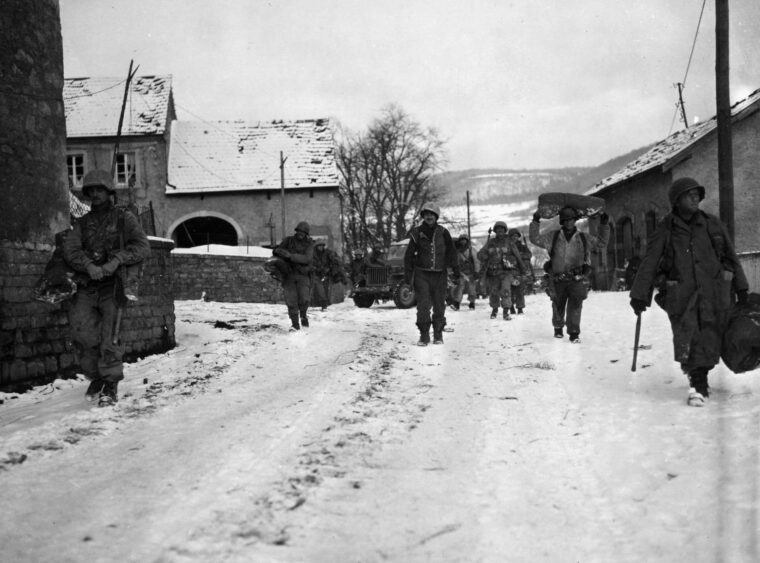
Dwight D. Eisenhower
During the second week of July 1944 a young, sharp Lieutenant Goldstein of the 4th Infantry Division’s 22nd Infantry Regiment was told by his boss, Colonel Buck Lanhan, “Expect a special civilian, a big war correspondent is coming to visit us. Read more
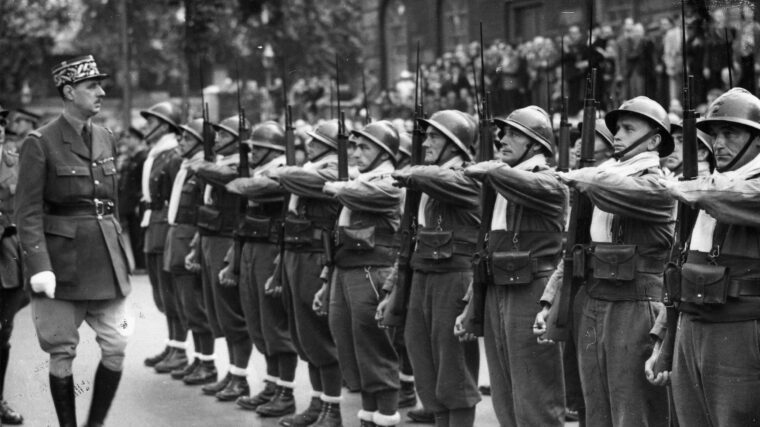
Dwight D. Eisenhower
On the evening of June 16, 1940, Marshal Henri Philippe Pétain was appointed Prime Minister of France. It was a critical time. Read more
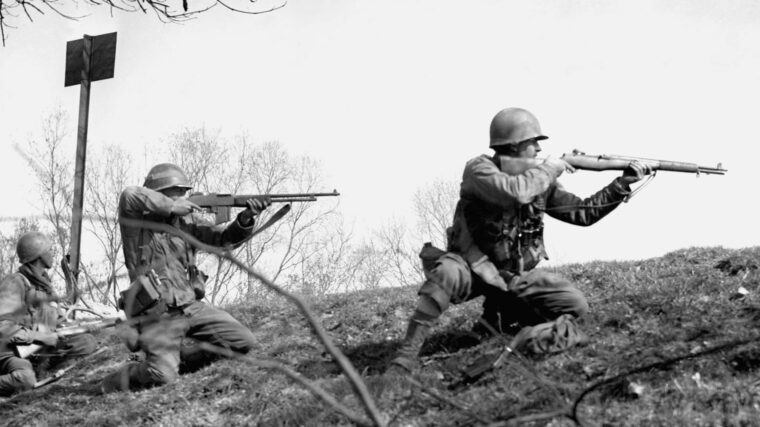
Dwight D. Eisenhower
By early 1945, less than a year before General George S. Patton’s mysterious death, Adolf Hitler’s armies were almost exhausted. Read more
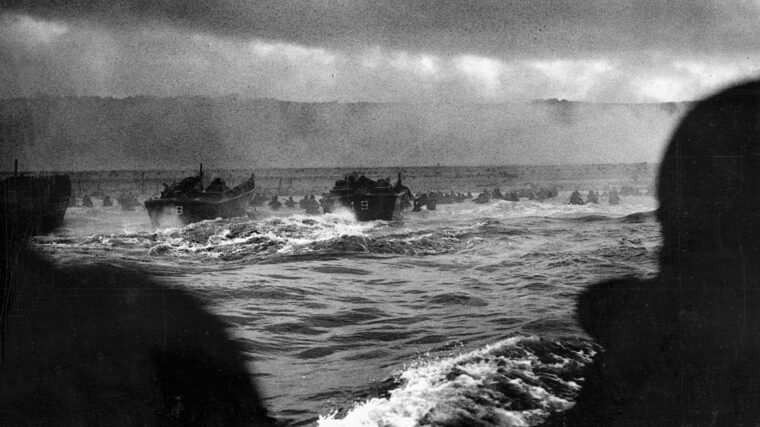
Dwight D. Eisenhower
Operation Overlord, the cross-Channel attack that hit the Nazi-occupied beaches of Normandy in 1944, was the culmination of a grand strategy adopted early in the war, followed sporadically during the years of conflict, and aimed at defeating Hitler’s Reich by striking directly at Germany by invasion. Read more
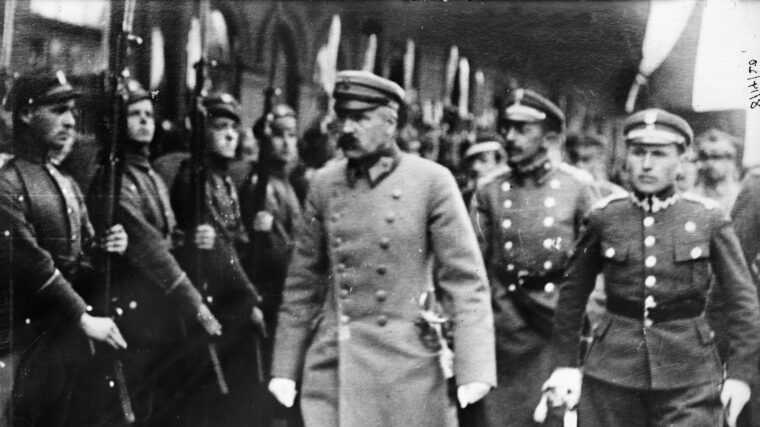
Dwight D. Eisenhower
”The subject of Poland is by far the most complex of all the problems to be considered,” the American delegation to the Paris Peace Conference at Versailles was told in 1919, as it was preparing to sort out the incredible mess in European affairs following the end of World War I. Read more
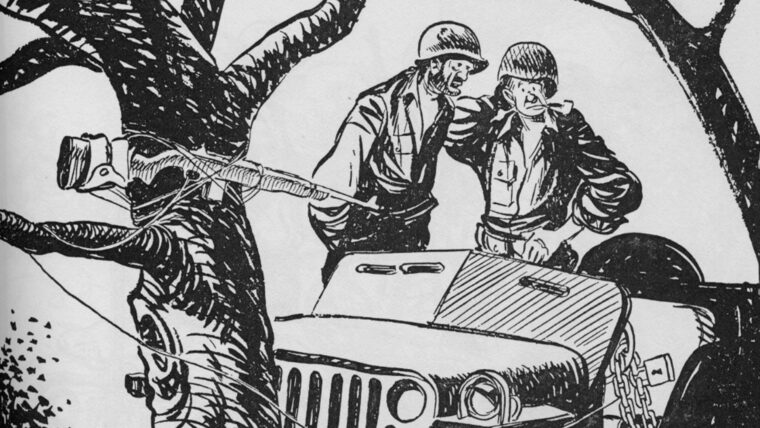
Dwight D. Eisenhower
Among the thousands of American soldiers slogging through the miserable winter of 1944 in southern Italy after the Allied landing at Anzio were two GIs who existed only on paper, but who became as real to their readers as the mud-covered, K-ration-eating guys sitting next to them in their foxholes. Read more
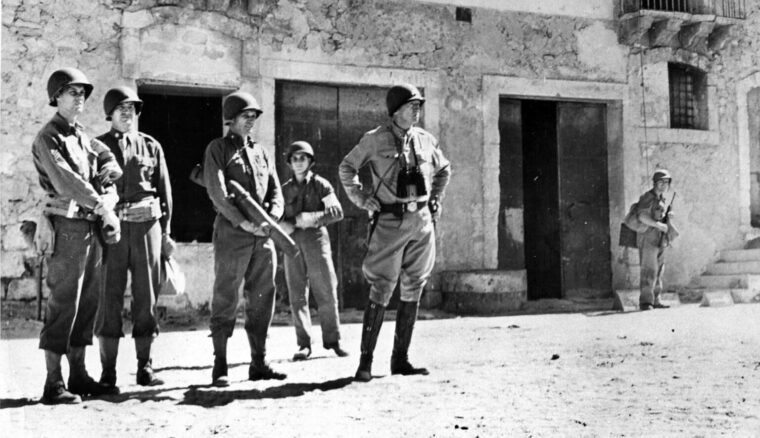
Dwight D. Eisenhower
On August 3, 1943, the day that General George S. Patton, Jr., learned that his superior, General Dwight D. Read more
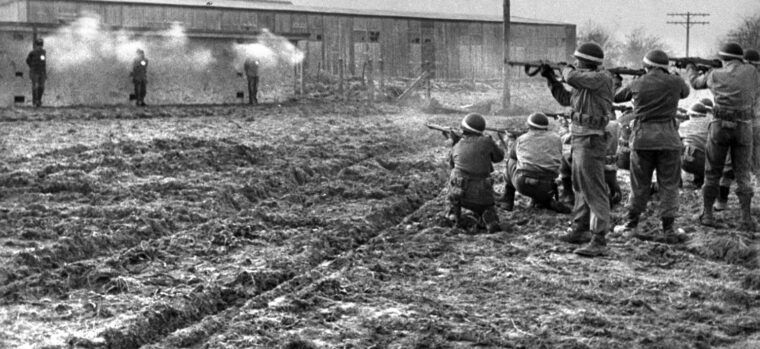
Dwight D. Eisenhower
With a quarter of a million German troops pouring through the Ardennes Forest, three Americans fleeing in a jeep should have raised no alarm. Read more
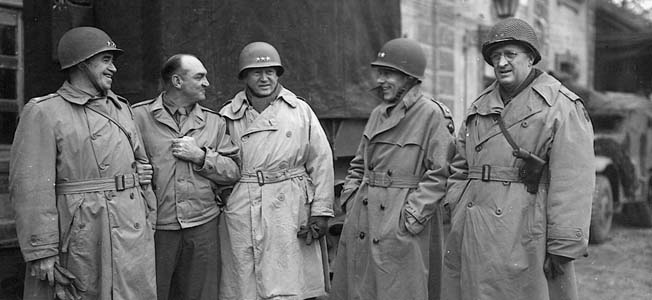
Dwight D. Eisenhower
When Adolf Hitler’s last major World War II offensive burst through the chill Ardennes Forest early on December 16, 1944, it scattered American frontline units and caused many anxious hours in the Allied high command. Read more